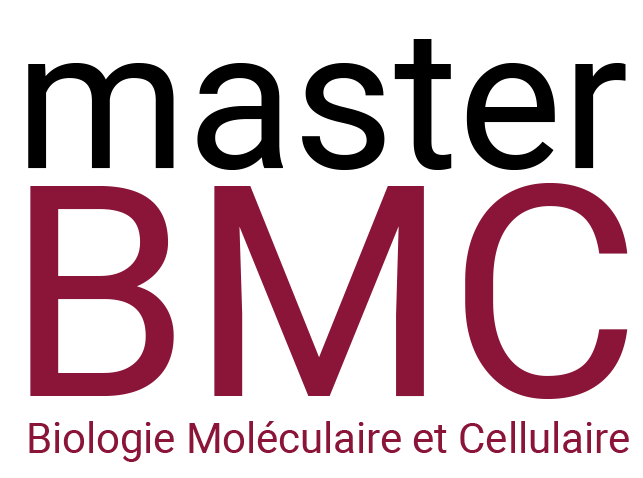Modulation of liver metabolism during hepatitis B infection: impact on carcinogenesis
Responsable du Stage : Neuveut Christine
Tél : 0685931121 E-mail: christine.neuveut@igh.cnrs.fr
Institut de Génétique Humaine Montpellier
Résumé du Projet de Stage
Chronic hepatitis B (CHB) virus infection represents a major health problem with about 250 million of chronically infected patients at high risk to develop severe liver diseases such as hepatocellular carcinoma. CHB represents an area of high unmet medical need since current treatments control HBV infection and improve liver functions, but are unable to completely clear the virus. Viral persistence is due to the maintenance, in the nuclei of infected cells, of the cccDNA that is not targeted by the antiviral treatment and to the impairment of both the innate and adaptive immune responses that accompanies CHB infection. It is thus important to develop new drugs that could either target directly the viral replication or improve the host antiviral response. A better understanding of the host-virus interaction is thus required in order to identify new therapeutic targets. Therefore, the aim of our project was to understand how HBV manipulates the host proteome during the course of infection and to understand the mechanism of viral escape as well as identify new antiviral factors. To this aim, in collaboration with the laboratory of P Lehner (UK), we applied the multiplex tandem-mass-tag-based mass spectrometry, a technique that allows a quantitative analysis of temporal changes in host and viral proteins through the course of infection, in HBV infected primary human hepatocytes (PHH). Since through its interaction with Cul4A-based ubiquitin E3 ligase complex, HBx may counteract other restriction factors beside the already described SMC5/6 complex, another proteome of HepaRG cells transduced with either HBx protein or HBx mutant (HBx R96E) unable to bind DDB1 was analyzed and compared to the proteome of HBV infected PHH. Several cellular proteins down- or up-regulated during the course of HBV infection as well as proteins down-regulated specifically by HBx were identified.
The master student will study more specifically 2 identified candidates that are down-regulated in infected PHH and in HepaRG transduced cells and that have been selected based on gene ontology (molecular function and biological process). During this year, the master student will focus on the mechanisms employed by HBx to down-regulate these proteins as well as the impact of these two proteins on HBV replication. She-He will also assess whether HBx via their down-regulation modulates liver metabolism, a mechanism that can be involved in carcinogenesis.
Dernières Publications en lien avec le projet :
– Genera M, Quioc-Salomon B, Nourisson A, Colcombet-Cazenave B , Haouz A, Ariel Mechaly6, Matondo M, Duchateau M , König A,Windisch M. P , Neuveut C , Wolff N Célia Caillet-Saguy C. (2021). Molecular basis of the interaction of the human tyrosine phosphatase PTPN3 with the hepatitis B virus core protein. Sci Rep. 2021 Jan 13;11(1):944. doi: 10.1038/s41598-020-79580-9.
– Dias J. D., Sarica N. and Neuveut C. Early Steps of Hepatitis B Life Cycle: From Capsid Nuclear Import to cccDNA Formation. Viruses 2021 Apr 26;13(5):757. Doi: 10.3390/v13050757.
-Rivière L., Quioc-Salomon B., Fallot G, Halgand B, Féray C., Buendia M.A. and Neuveut C. (2019). Hepatitis B virus replicating in hepatocellular carcinoma encodes HBx variants with preserved ability to antagonize restriction by Smc5/6. Antiviral Reserach 172: 104618.doi: 10.1016/j.antiviral.2019.104618.
– Moreau P., Cournac A., Palumbo G. A., Marbouty M., Mortaza S., Thierry A., Cairo S., Lavigne M., Koszul R. and Neuveut C. (2018). Tridimensional infiltration of DNA viruses into the host genomeshows preferential contact with active chromatin. Nature Comm. Oct 15;9(1):4268. doi:10.1038/s41467-018-06739-4.
– Dusséaux M., Masse-Ranson G., Darche S., Ahodantin J., Yan Li Y., Fiquet O., Beaumont E., Pierrick Moreau P. , Rivière L., Neuveut C. , Soussan P. , Roingeard P., Kremsdorf D., Di Santo J.P , Strick-Marchand H. (2017). Viral load affects the immune response to HBV in mice with humanized immune system and liver. Gastroenterology doi.org/10.1053/j.gastro.2017.08.03446
– Halgand B, Desterke C, Rivière L, Fallot G, Sebagh M, Calderaro J, Bioulac-Sage P, Neuveut C, Buendia MA, Samuel D, Féray C.(2017). Hepatitis B virus pregenomic RNA in hepatocellular carcinoma: A nosological and prognostic determinant. Hepatology. 2017 Aug 12. doi: 10.1002/hep.29463
– Altınel,*, K. Hashimoto1,*,Y. Wei, C. Neuveut, I. Gupta, A.M.Suzuki, A. Dos Santos4, P. Moreau, T. Xia, SKojima, S. Kato; Y. Takikawa7, I Hidaka, M Shimizu, T Matsuura, A Tsubota, H Ikeda, S Nagoshi, H Suzuki,M-L Michel, D Samuel,M A Buendia, J Faivre, & P Carninci (2016). Singlenucleotide- resolution mapping 1 of HBV promoters in infected human livers and hepatocellular carcinoma. J. Virol . 90: 10811-108222.
– Petropolis DB, Faust DM, Tolle M, Rivière L, Valentin T, Neuveut C, Hernandez-Cuevas N, Dufour A, Olivo-Marin JC, Guillen N (2016). Human Liver Infection in a Dish: Easy-To-Build 3D Liver Models for Studying Microbial Infection – PLoS ONE 11(2):e0148667
– Rivière L., Gerossier L., Ducroux A., Dion S., Deng Q., Michel M.L. , Buendia M.A., Hantz O. and Neuveut C. (2015). HBx relieves chromatin-mediated transcriptional repression of hepatitis B viral cccDNA involving SETDB1 histone methyltransferase. J. Hepatol. doi: 10.1016/j.jhep.2015.06.023.
Ce projet s’inscrit-il dans la perspective d’une thèse :
oui x
si oui type de financement prévu :MESRI
Ecole Doctorale de rattachement :CBS2 montpellier
Intitulé de l’Unité : Institut de Génétique Humaine/équipe Virologie Moléculaire
Intitulé de l’équipe : Virologie Moléculaire
Nom du Responsable de l’Unité : Pasero Philippe
Nom du Responsable de l’Équipe : Benkirane Monsef
Adresse :141 rue de la cardonille, 34090 Montpellier

